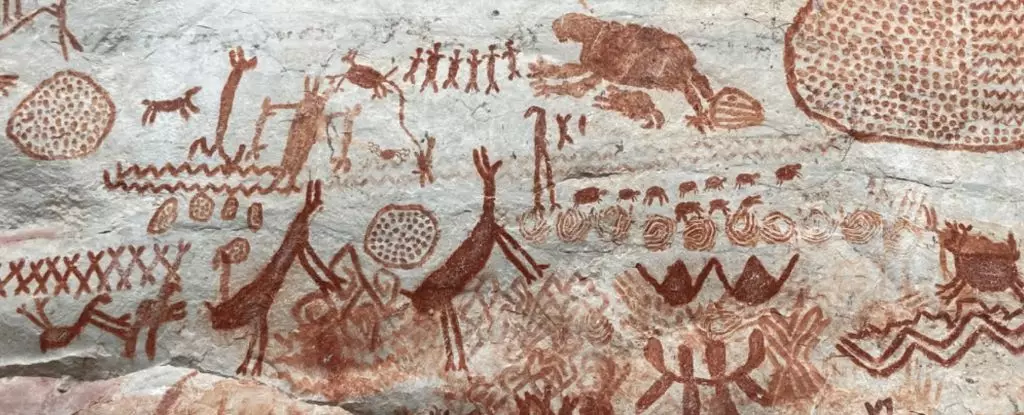The rock art found in Serranía De La Lindosa, Colombia, serves as a remarkable window into the spiritual and cultural beliefs of the Indigenous peoples of the Amazon. Comprising an astounding variety of motifs, these artworks document not only the history of these communities but also their intricate connections to the natural and spiritual worlds. Despite political turmoil and challenging geographical conditions hindering access for a century, collaboration between Indigenous elders and international researchers has catalyzed a resurgence of interest in these invaluable cultural artifacts.
The collaboration of Indigenous leaders with academics has led to the documentation of tens of thousands of rock art images across six key sites. UK archaeologist Jamie Hampson, who has engaged with similar Indigenous communities globally, emphasizes the unique alignment between Indigenous knowledge and the motifs depicted in the art. This relationship enhances our understanding of the symbolism and messages conveyed in the art, integrating Indigenous voices into the narrative surrounding its interpretation.
The paintings, primarily created using ochre, showcase figures that span human representations, flora, fauna, and geometric patterns. Some of these motifs are estimated to date back over 11,000 years, providing a rich tapestry of life as experienced by these Indigenous cultures. One of the most striking aspects revealed by the elders is that the art encapsulates not solely an observation of the environment but a profound engagement with spiritual elements. Ritualized negotiations with the spirit realm surface through the imagery of humans transforming into animals and the depiction of hybrids between plants and humans.
Elder Ismael Sierra highlights the spiritual significance of these motifs, recalling encounters with beings that exist not only in the material world but also within the sacred and mystical layers of their environment. The presence of mythical creatures, such as dual-headed panthers, emphasizes the belief in a multifaceted reality where spirits interact continuously with humans, reflecting a cosmology deeply rooted in animism.
Animals play a crucial role in the belief systems of Amazonian cultures, often seen as protectors and mediators between the human realm and the spirit world. Hampson explains how Indigenous peoples engage in negotiations with forest spirits during hunting activities, relying on the painted images as conduits for their requests. The act of depicting these animals—often in red pigment on rock surfaces—serves as a medium of communication, not merely for sustenance but for the vitality of the ecosystem as a whole.
Moreover, animals like jaguars embody a special significance in these cultures. They represent shamans and serve as critical links between various cosmic realms, bridging life and death, human existence with ancestral spirits, and the dichotomy of nature and culture. The word “yee” in the local Desana language, signifying both “jaguar” and “shaman,” perfectly encapsulates this duality and its profound implications within the community’s worldview.
Nonetheless, this rich tapestry of beliefs is under siege from various modern conflicts and socio-political upheaval. With increasing displacement of Indigenous communities from their ancestral lands, the future of these sacred sites—and indeed, the cultural practices associated with them—hangs in the balance. As elder Ismael expresses concern for the preservation of these paintings, he poignantly asks who will ensure their maintenance amid rising tensions.
The ongoing challenge lies in preserving not just the rock art but the narratives and traditions that surround it. Disconnection from these cultural expressions risks erasing crucial historical records, diminishing the legacy of Indigenous peoples in the Amazon. Highlighting the significance of collaboration between researchers and Indigenous communities, Hampson underscores the importance of understanding these artworks within their proper context, ensuring that they are appreciated as living reflections of an ongoing cultural identity.
In sum, the rock art of Serranía De La Lindosa represents far more than ancient imagery; it serves as a vital key to understanding the intricate relationships Indigenous peoples have with their environment and the spiritual dimensions of their lives. Moving forward, it is crucial to facilitate essential dialogues that allow Indigenous voices to steer the narrative regarding their heritage. By uplifting these stories and recognizing the integral role of these artworks, we not only enrich our understanding of human history but also support the resilience of Indigenous cultures in the face of modern challenges.

